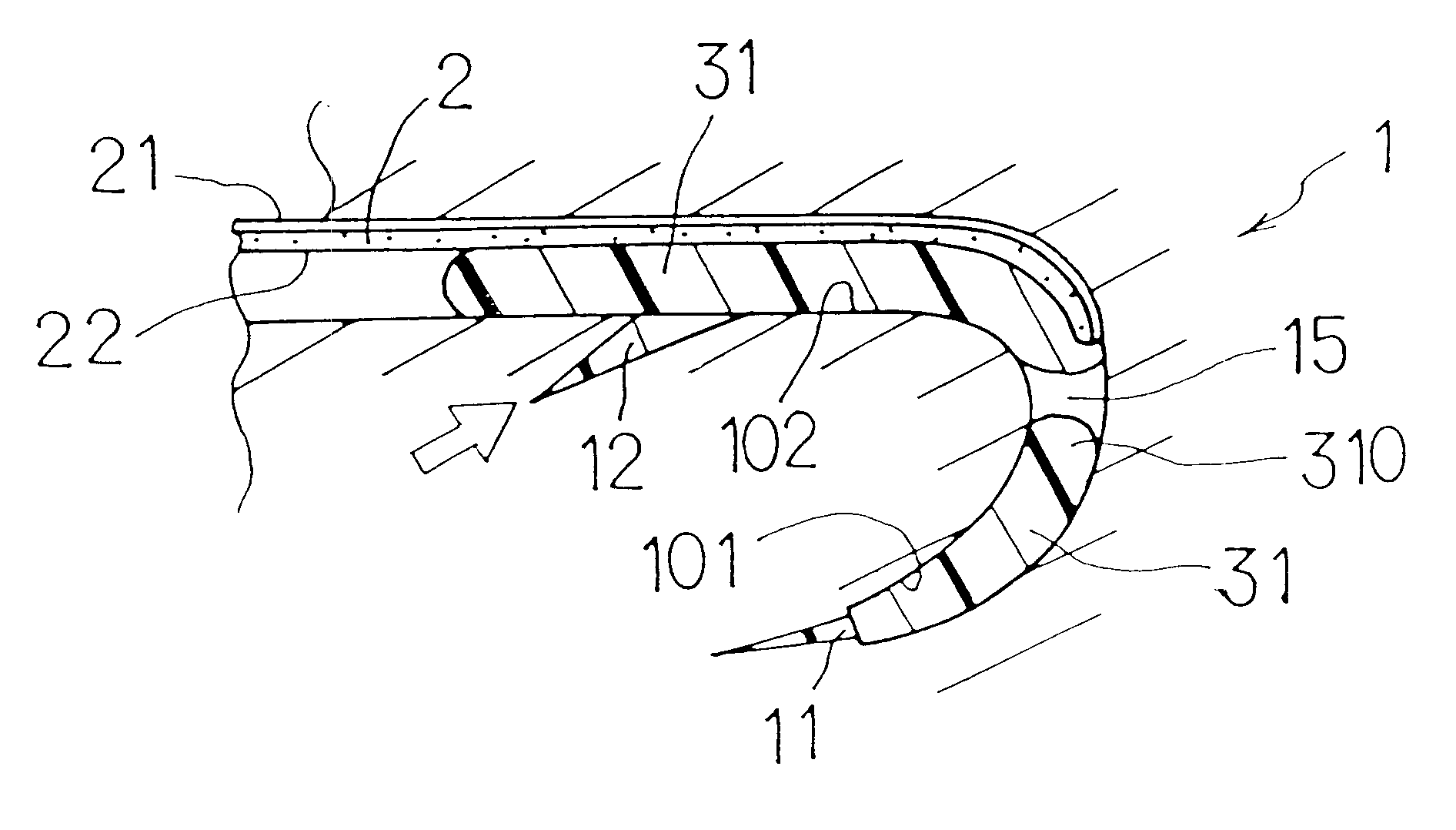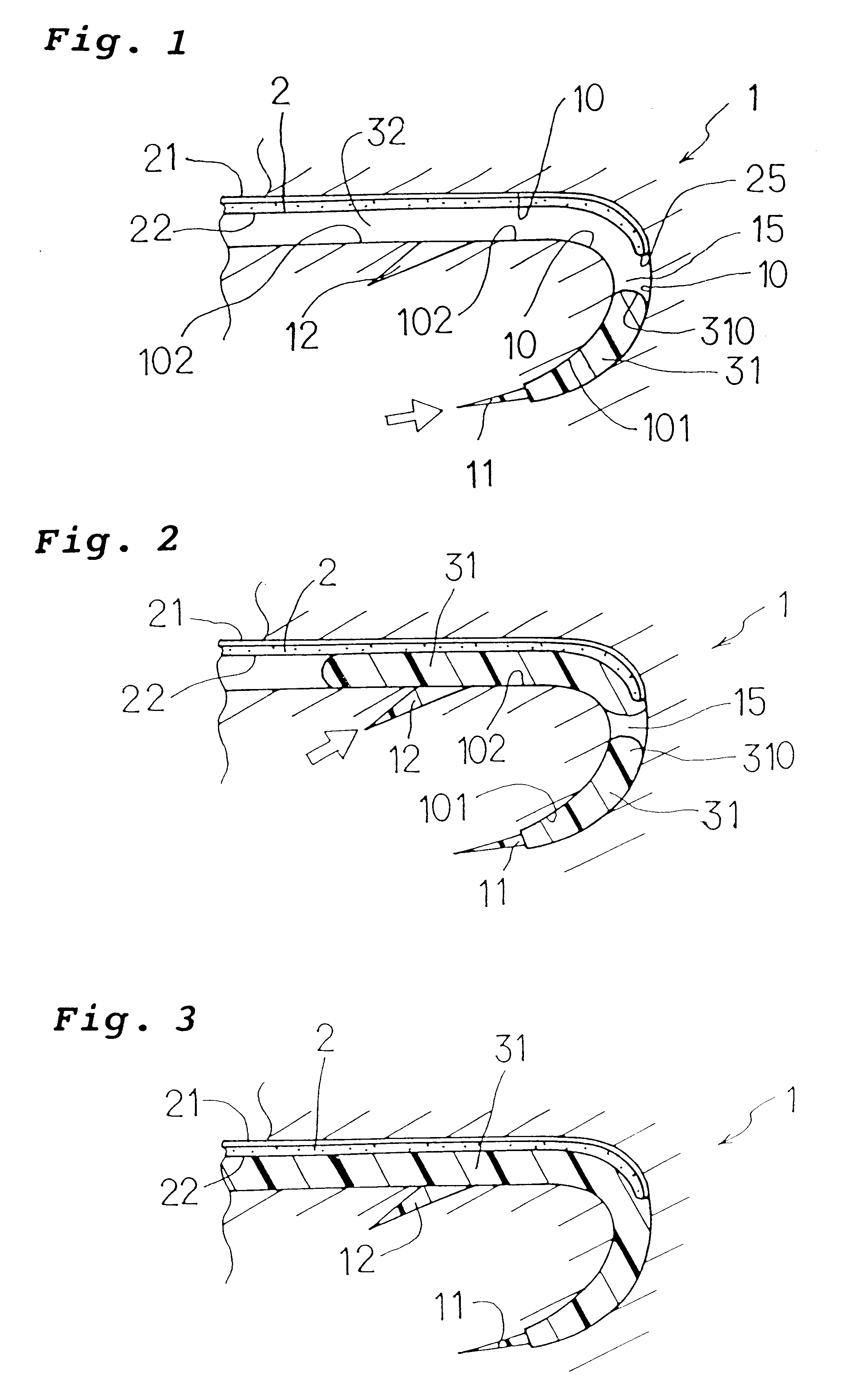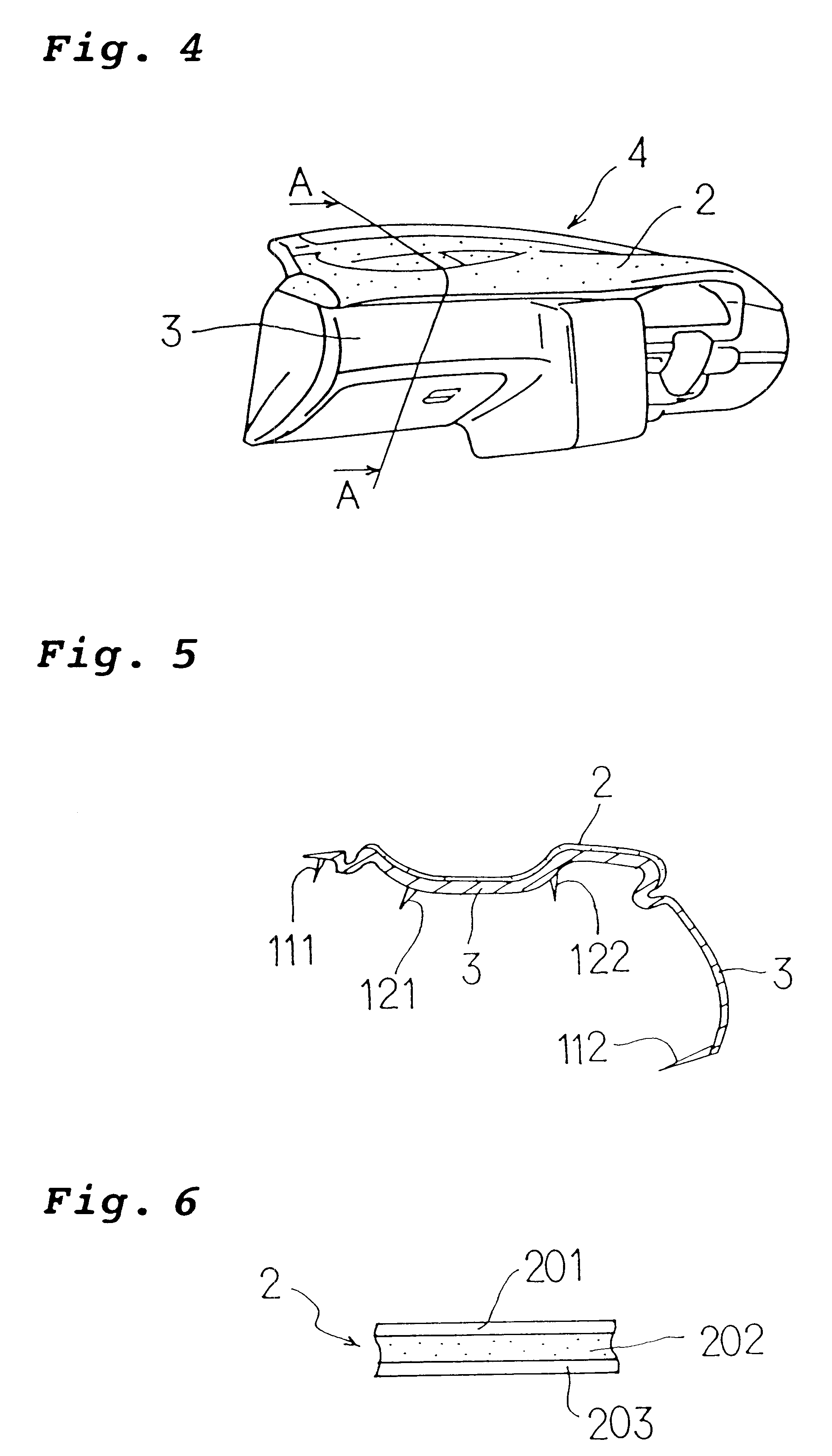Methods for molding resin-molded articles
a technology of resin-molded articles and molding methods, which is applied in the direction of manufacturing tools, food shaping, drawing profiling tools, etc., can solve the problems of adverse effects of the appearance of the resin-molded article 9
- Summary
- Abstract
- Description
- Claims
- Application Information
AI Technical Summary
Benefits of technology
Problems solved by technology
Method used
Image
Examples
embodiments
Embodiment 1
A method for molding a resin-molded article having a skin on a portion thereof according to Embodiment 1 of the first aspect of the present invention is discussed with reference to FIGS. 1 to 3.
The method for molding of Embodiment 1 employs a mold 1 having a first gate 11 on a first inner wall part 101 facing away from a back surface 22 of a skin 2 placed on a inner wall 10 of the mold 1 and a second gate 12 on a skin-facing inner wall part 102 which faces the back surface 22 of the skin 2.
For molding, as shown in FIG. 1, a synthetic resin 31 is injected from the first gate 11 and the first gate 11 is closed when the tip portion 310 of the synthetic resin 31 comes to the point 0 to 10 cm distant from an edge 25 of the skin 2. Then, as shown in FIG. 2, the synthetic resin 31 is injected from the second gate 12 and dwelling is performed as the second gate 12 remains opened.
Consequently, as shown in FIG. 3, both of the synthetic resins 31 described above fuse with each othe...
embodiment 2
In Embodiment 2, the injection of the synthetic resin from the first gate was discontinued when the tip portion 310 of the synthetic resin reached a point 2 cm from the edge of the skin 2, and subsequently the second gate was opened. Dwelling by the second gate was performed for 15 to 20 seconds.
The production of the instrument panel of Embodiment 2 is performed by the same method as described in Embodiment 1.
According to Embodiment 2, an instrument panel having an excellent surface appearance with no resin-intrusion on the front surface of the skin 2 can be obtained.
embodiment 3
Embodiment 3 is an example of an application of the first aspect of the invention to a door trim of an automobile as shown in FIGS. 7 and 8.
The door trim has a resin part 30 formed entirely from a synthetic resin with a skin 20, as shown in the both figures. In these figures, an arm rest 451, a speaker box 452 and a pocket 453 are also shown.
As the skin 20, a fabric backed with a polypropylene sheet on its back surface is used. Polypropylene is used as the synthetic resin.
Plural first gates 115 and 116, and plural second gates 125 and 126 are employed.
The production of the instrument panel of Embodiment 3 is performed by the same method as described in Embodiment 1.
According to this embodiment, an instrument panel (a door trim) having an excellent surface appearance with no resin-intrusion on the front surface of the skin 20 can be obtained.
PUM
| Property | Measurement | Unit |
|---|---|---|
| distance | aaaaa | aaaaa |
| distance | aaaaa | aaaaa |
| pressure | aaaaa | aaaaa |
Abstract
Description
Claims
Application Information
 Login to View More
Login to View More - R&D
- Intellectual Property
- Life Sciences
- Materials
- Tech Scout
- Unparalleled Data Quality
- Higher Quality Content
- 60% Fewer Hallucinations
Browse by: Latest US Patents, China's latest patents, Technical Efficacy Thesaurus, Application Domain, Technology Topic, Popular Technical Reports.
© 2025 PatSnap. All rights reserved.Legal|Privacy policy|Modern Slavery Act Transparency Statement|Sitemap|About US| Contact US: help@patsnap.com



